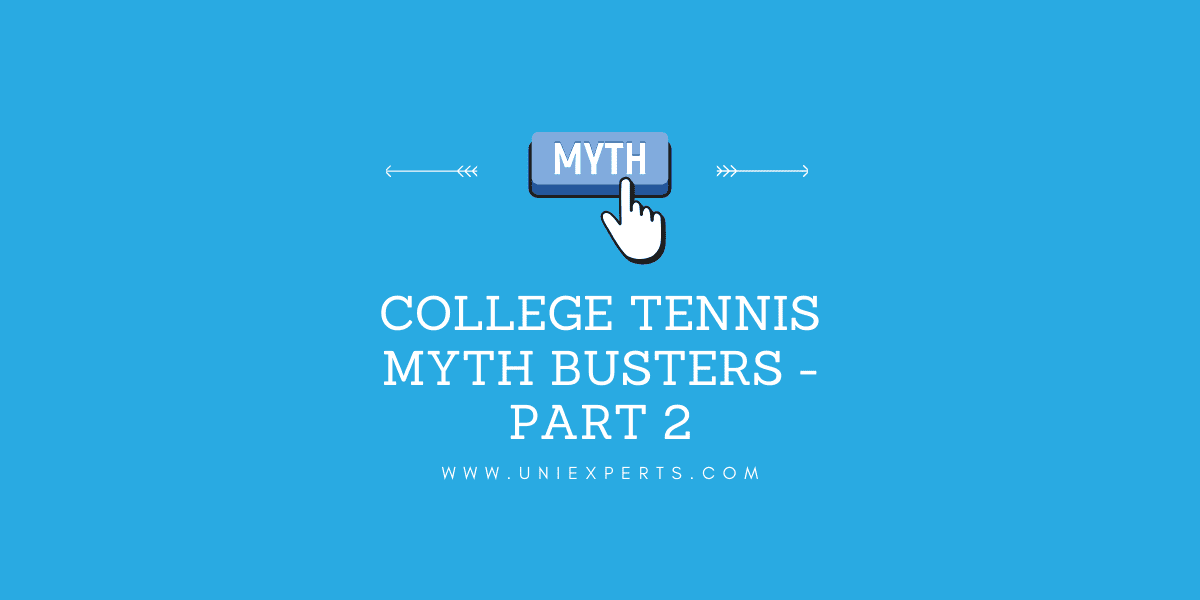College Tennis Myth Busters – Part 2
May 25 2020
May 25 2020

There is a lot of doubt circulating concerning the idea of playing #collegetennis.
We would like to shed light on this debate. Read some of the most common myths about college sports and check how the truth looks like.
Make sure to sign up for our monthly newsletter if you are interested in more news & updates about the college sports world. SIGN UP
Myth Buster Stories about College Tennis
Myth#6: Nobody becomes a professional out of college tennis.
Truth: 2% of all college athletes move from college sports to professional. That’s not a big number, but the rate is increasing. John Isner (University of Georgia) and Kevin Anderson (University of Illinois) are just a few current examples where professional tennis players started their careers in college. Check back in one of our next posts to see who turned pro after graduating from college.
Myth#7: College tennis is all about the individual and not about the team spirit.
Truth: Even though tennis is an individual sport, college tennis in the US is about the team and team spirit. The team wins or loses together which creates great team dynamics and a “family feeling”. Have you ever watched a championship game? No? Go ahead and watch a “clinching point match” to witness pure emotion and team spirit.
Myth#8: College athletes are working for free without getting paid at all.
Truth: Adding up all expenses for professional coaching, strength and fitness training, the assistance of athletic trainers, and medical support, college athletes receiving a full-ride scholarship in a major college league will accumulate money worth of up to $ 125,000 per year.
Myth#9: There is only unhealthy (fast) food in America and no way not to get fat.
Truth: There is always a healthy option in the dining hall like salads. Many coaches even write nutrition schedules for their athletes as they want them to show their best performance. But also, your chance to taste first-hand US candy like peanut butter cookies.
Myth#10: If you get injured, they will drop you from the team.
Truth: You will get medical assistance, physical therapy, and time to recover while still receiving your scholarship. Also, you will get an extra year of competing in college leagues.